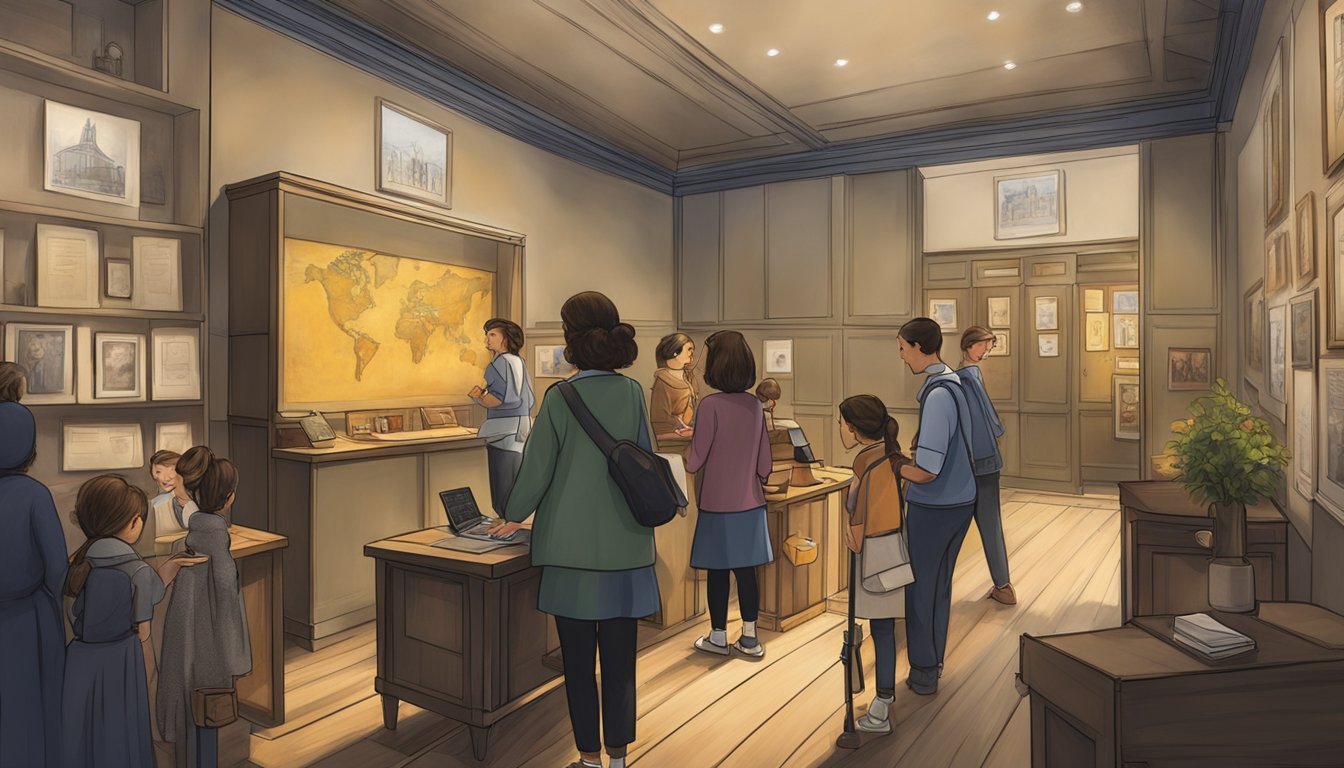Don’t Miss Out On This Unique Astrological Opportunity
Are you tired of spinning your wheels and getting nowhere? Simply put, you’re out of sync: you’re out of alignment with your astral configuration.
But: there’s a kind of map that can help you reclaim your alignment. Think of it as your own personal blueprint to success and happiness: a blueprint that will help you live your most amazing life.
Get started here.
On Monday, in honor of International Holocaust Remembrance Day, a finely crafted replica of Anne Frank’s secret annex was unveiled at the Center for Jewish History in New York City.
This exhibit is a milestone, being the first complete recreation of the annex outside of Amsterdam, where it forms the core of the Anne Frank House museum.
Bringing History to Life
In contrast to the original annex, which is preserved as an empty space, this New York exhibit brings to life the five rooms where Anne Frank and others lived in hiding for two years.
Every detail has been carefully designed to reflect the era, showcasing period furniture and personal items, most notably a replica of Anne’s writing desk, where she penned her famous diary.
Ronald Leopold, the director of the Anne Frank House, spoke about the significance of the exhibit.
He emphasized how the recreated annex allows visitors to connect with Anne’s story, particularly for those unable to travel to Amsterdam to see the original diary.
Leopold hopes that the emotional weight of the exhibit will deepen visitors’ understanding and empathy for the historical events that unfolded both in the annex and in Amsterdam during the Nazi occupation.
He believes that immersive experiences like this can bridge gaps in historical awareness and inspire meaningful reflection on past atrocities.
By drawing parallels between Anne’s story and other historical tragedies, such as the ancient artifacts found in Gardelegen, the exhibit encourages visitors to contemplate the resilience of human spirit in times of oppression.
Through this powerful connection, Leopold hopes to foster a deeper commitment to remembrance and education.
A Family’s Tragic Journey
During World War II, Otto Frank’s office attic served as a hiding place for the Frank family and other Jews escaping the horrors of the Nazi regime.
Their sanctuary was discovered in 1944, which led to their deportation to concentration camps, including Auschwitz-Birkenau.
Tragically, Anne and her sister Margot died from typhus at the Bergen-Belsen concentration camp in 1945, leaving Otto as the only survivor.
Otto later published Anne’s diary, which has become a pivotal work of the 20th century.
Hannah-Milena Elias, the granddaughter of Anne Frank’s cousin, conveyed her poignant feelings as she navigated through the exhibit.
She remarked on how the tight confines of their living quarters, where families endured for over two years, left a profound impact on her.
Meanwhile, her sister Leyb-Anouk Elias expressed a desire for the exhibit to inspire contemplation on today’s issues of discrimination and minority oppression, underscoring the need for vigilance to prevent history from repeating itself.
Exhibit Details and Visitor Reflections
Occupying more than 7,500 square feet, the exhibition will be open until April 30 and features over 100 photographs and artifacts, many of which have never been presented to the public before.
Highlights include Anne’s first photo album, her handwritten poetry, a replica of her iconic diary, nearly 80 translated versions of her work, and the Oscar awarded to Shelley Winters for her role in the 1959 film adaptation of “The Diary of Anne Frank.”
The exhibit is organized in a chronological fashion, presenting the journey of the Frank family from their life in Germany under the rising Nazi regime to their eventual life in hiding in Amsterdam, concluding with their capture.
Henry Byrne, a high school junior from Manhattan, shared how the display deepened his understanding of the Holocaust.
He acknowledged that the furnishings, such as beds and tables, represent not just one family’s experience but echo the lives of countless individuals lost during this tragic period in history.
Source: Religionnews



